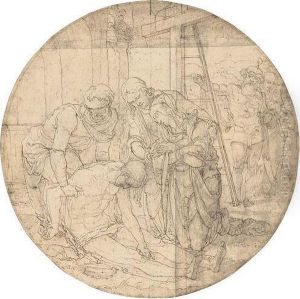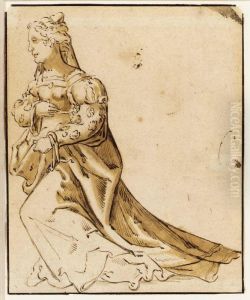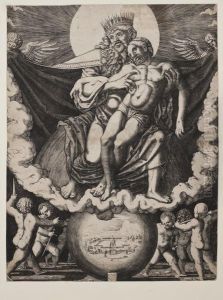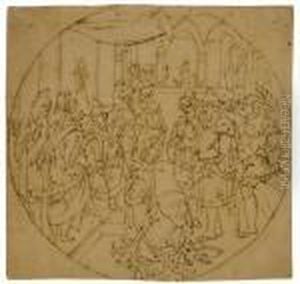Nikolaus Hogenberg Paintings
Nikolaus Hogenberg was a notable figure in the world of Renaissance art, born around 1500 and passing away in 1539. He was an engraver, printmaker, and publisher who played a significant role in the early development of printmaking in Northern Europe. Hogenberg's work is especially recognized for its intricate detail and the innovative techniques he employed in the art of engraving, which were groundbreaking at the time. Despite the scarcity of personal details about his life, his artistic legacy offers insight into his contributions to the art world and the cultural milieu of the Renaissance period.
Hogenberg is perhaps best known for his involvement in the production of the 'Civitates Orbis Terrarum,' a monumental collection of city maps and views, which he worked on alongside Georg Braun. This work, often considered the first atlas of towns, showcases Hogenberg's mastery in engraving and his ability to capture the architectural and urban details of various cities across Europe and beyond. His engravings not only served as artistic representations but also as valuable records of urban landscapes during the Renaissance.
Throughout his career, Hogenberg was active in various parts of Europe, including Mechelen in present-day Belgium, where he is believed to have been born, and Cologne, where he spent a significant part of his life and where he likely died. His mobility across Europe contributed to the dissemination of his works and the exchange of artistic ideas during the period. Despite the challenges of tracing his life due to the lack of comprehensive records, Hogenberg's contributions to the field of engraving and his role in the early history of printed maps and city views remain an enduring part of his legacy.



